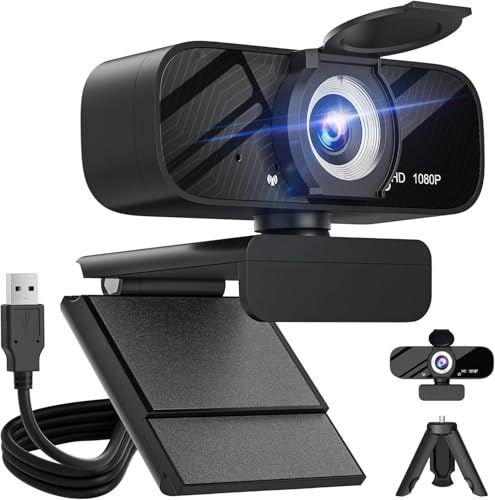Unlocking Success with Cross-Platform Marketing Strategies
Introduction to Cross-Platform Marketing
In today’s digital world, cross-platform marketing is essential for brands aiming to reach their audience effectively. This strategy allows you to engage customers across various platforms—like social media, email, and websites—ensuring a seamless experience. Understanding the definition and importance of this approach can help your business thrive in a competitive landscape. With current trends leaning towards integrated marketing efforts, it’s crucial to adopt strategies that resonate with your target audience while maximizing your brand’s visibility.
Understanding Cross-Platform Marketing
What is Cross-Platform Marketing?
Cross-platform marketing refers to the practice of promoting your brand across multiple channels and devices. This means that whether someone sees your ad on Facebook, receives an email from you, or visits your website, they encounter a consistent message and branding. The goal is to create a unified customer experience that encourages engagement and drives conversions.
Key Differences Between Multi-Channel and Cross-Platform Approaches
While both multi-channel and cross-platform marketing involve using different channels, they differ significantly in execution. Multi-channel marketing focuses on engaging customers through various standalone channels without necessarily integrating them. In contrast, cross-platform marketing emphasizes creating a cohesive strategy where all channels work together harmoniously. This integration leads to better customer experiences as users receive consistent messaging regardless of where they interact with your brand.
Benefits of Cross-Platform Marketing
Enhanced Audience Reach
One of the primary benefits of cross-platform marketing is enhanced audience reach. By utilizing multiple platforms simultaneously, you can connect with diverse segments of your target market more effectively. For example, younger audiences may prefer Instagram or TikTok while older demographics might engage more on Facebook or through email campaigns.
Improved Customer Experience
Cross-platform strategies lead to improved customer experiences by providing seamless transitions between different touchpoints. When customers recognize familiar branding and messaging across platforms, it builds trust and loyalty toward your brand. A positive experience encourages repeat interactions and increases the likelihood of conversions.
Increased Brand Consistency
Consistency is key in branding; cross-platform marketing ensures that all communications reflect the same voice and image. Whether it’s visual elements like logos or tone in messaging, maintaining consistency helps reinforce brand identity in consumers’ minds.
Developing a Cross-Platform Marketing Strategy
Identifying Your Target Audience
To develop an effective cross-platform marketing strategy, start by identifying your target audience clearly. Understand their preferences regarding content consumption—what platforms do they use? What types of content do they engage with? Gathering insights about demographics will help tailor messages that resonate well with them.
Choosing the Right Platforms for Your Brand
Selecting the right platforms is crucial for successful cross-platform marketing. Analyze which channels align best with your audience’s habits and preferences while considering where competitors are active as well. Focus on quality over quantity; it’s better to excel on fewer relevant platforms than spread yourself too thin across many.
Creating Cohesive Messaging Across Channels
Once you’ve identified suitable platforms, ensure that messaging remains cohesive across all channels used in your campaign efforts. Use similar themes but adapt content formats according to each platform’s unique characteristics—for instance, short videos for TikTok versus longer articles for blogs—to maintain engagement without losing consistency.
Tools and Technologies for Cross-Platform Marketing
Essential Software Solutions
Utilizing software solutions designed for cross-platform management can simplify campaign execution significantly. Tools like Hootsuite allow you to schedule posts across various social media accounts simultaneously while ensuring uniformity in messaging.
Analytics and Performance Tracking Tools
Analytics tools such as Google Analytics provide valuable insights into how well each channel performs within a campaign context; tracking user behavior helps refine future strategies based on what works best among targeted audiences.
Best Practices for Effective Cross-Platform Campaigns
Personalization Techniques
Personalization plays an essential role in engaging users effectively throughout their journey across different touchpoints within campaigns tailored specifically toward them based upon previous interactions observed via data collected from analytics tools mentioned earlier!
Engaging Content Creation
Creating engaging content tailored specifically toward each platform enhances user interaction levels significantly! Utilize visuals alongside compelling copywriting techniques aimed at capturing attention quickly before delivering value-added information relevant directly back into consumer interests established during initial research phases conducted earlier!
Continuous Optimization and Testing
Lastly but importantly: continuous optimization through testing various approaches enables marketers greater flexibility when adapting strategies based upon real-time feedback received during ongoing campaigns! Regularly assess performance metrics gathered from analytics tools discussed previously so adjustments made reflect actual needs rather than assumptions alone!
Case Studies of Successful Cross-Platform Marketing
Notable Brands Leading the Way
Several notable brands have successfully implemented effective cross-platform marketing strategies leading them toward significant growth! Companies like Nike utilize social media influencers alongside traditional advertising methods seamlessly integrating both approaches resulting increased visibility among diverse audiences worldwide!
Lessons Learned from Their Strategies
From these case studies emerge valuable lessons: prioritize understanding target audiences deeply before launching any new initiatives; ensure consistency remains paramount throughout every stage involved within campaigns executed; leverage technology effectively streamline processes enhance overall efficiency maximize results achieved ultimately driving success forward continuously evolving landscapes present today!
Conclusion: The Future of Cross-Platform Marketing
As we move forward into an increasingly digital age filled with ever-changing technologies influencing consumer behaviors constantly adapting becomes vital! Embracing innovative ideas surrounding cross-platform methodologies will empower businesses unlock potential opportunities arise fostering deeper connections between brands consumers alike paving pathways success ahead!
📢 Explore More: Continue Your Journey!
If this article helped you understand how important it is to implement effective strategies in today’s market landscape check out The Power of Personalization in Digital Marketing! It covers powerful insights helping you understand how tailoring messages can boost engagement rates even further.














![NEEWER 55W 18"/45cm Ring Light Kit [New Version], 5600K Dimmable ...](https://m.media-amazon.com/images/I/414QLqvZWLL.jpg)








